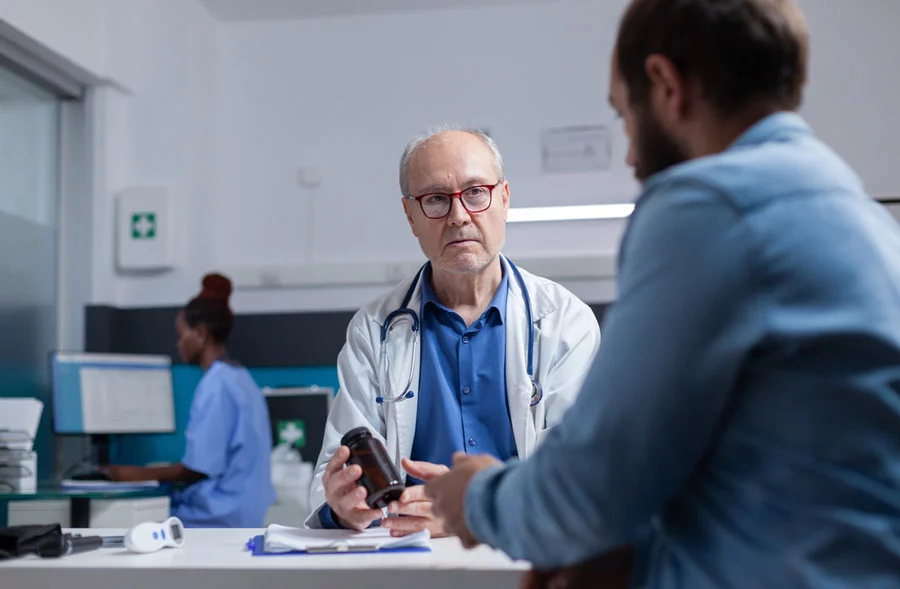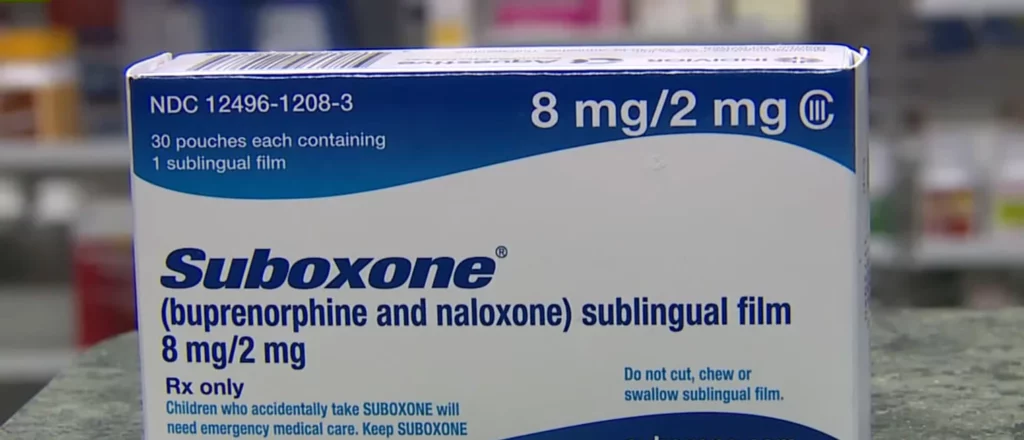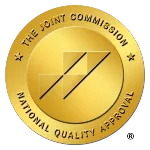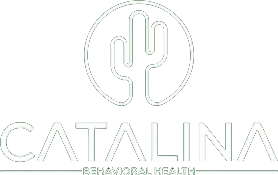Effective Programs to Treat Opioid Dependence
Heroin and pharmaceutical pain relievers like oxycodone and codeine both contribute to the development of opioid use disorders at startling rates in Arizona and nationwide. While opioid withdrawal symptoms can be unpleasant, opioid addiction treatment is available for those who seek it.
There is a better likelihood of long-term sobriety when a person receives medication assistance as part of a treatment plan that also includes individual and group therapy. Catalina offers evidence-based behavioral therapies as well as FDA-approved medications to help overcome opioid withdrawals and set the stage for lasting clean time.
Keep reading to learn about effective opioid addiction treatment, and how Catalina Behavioral Health can help you create a firm foundation for recovery!
How Does Opioid Use Disorder Change Your Life?
By binding to opioid receptors, opioids alter brain chemistry by stimulating the brain’s reward circuits, similar to other substance use disorders. The natural dopamine release in the brain is reduced while, at the same time, they release the feel-good hormone dopamine.
Feelings of pleasure are triggered by the release of dopamine in the brain during opioid usage, while other brain regions create long-lasting associations between opioids and those positive emotions. Habit-forming drug urges are the result of a series of memories termed conditioned associations.
This is the same scenario that takes place during alternative types of drug abuse, albeit with the exclusion of opioid receptors. However, the complete change in the makeup of the brain is far more severe in the case of opioid substance use disorders.
Get Opioid Treatment Options – Call Now!
Opioid Drug Addiction Rewires Your Brain in a Way Other Substance Abuse Does Not
Long-term sufferers of opioid drug abuse unwittingly rewire their brains to depend on the chemicals produced by the drug in order to function normally. Just because you’re happy doesn’t mean you’re normal, though, much less healthy and functioning well.
Opioid drug addiction can also refer to the state of being able to go about one’s normal activities and responsibilities without undue fatigue or difficulty. Painful physical withdrawal symptoms and intense opioid cravings for additional heroin or drug of choice characterize opiate withdrawal.
Let’s take a look at some statistics regarding substance abuse in the context of opioid dependence.
Opioid Dependence: Frightening Numbers
- More than 11.8 million Americans had an opioid use disorder in 2016, and an additional 1.8 million had abused opioids.
- Opioids were involved in almost 70% of 2019 overdose deaths.
- Every day, over 130 Americans are killed by opioid overdose. Just 20% of Americans have gotten specialized treatment for opioid addiction as of 2018.
- It is estimated that the annual cost of the opioid epidemic to the United States is $500 billion.
What are the Types of Opioids?

Opioids include both naturally occurring opiates like heroin and morphine and synthetically produced opioid pain medications. Pain medications like fentanyl, oxycodone, hydrocodone, tramadol, codeine, hydromorphone, and oxymorphone are all examples of opioids.
Opioids have an anesthetic and euphoric impact by binding to one of three opioid receptors in the body. Illicit opioids and legal opioids can both be used recreationally to have a similar effect.
- Fentanyl: Duragesic®, Fentora®
- Oxycodone: OxyContin®, Percocet®, Percodan®, and Roxicodone®.
- Hydrocodone: Vicodin, Lortab, Norco, Zohydro Extended-Release, and Lorcet
- Medicines like Ultram, Ultram ER, and Ultracet® with codeine and tramadol
- A combination of codeine and morphine, such as in Tylenol® with Codeine® 3 or 4
- Hydromorphone: morphine, Avinza, Kadian, MSContin, and MSIR.
- Oxymorphone: Dilaudid® and Exalgo®
Though many prescribers offer Tramadol as a non-narcotic pain reliever, its effects have been found to cause dependence and addiction in many individuals, with a corresponding need for effective Tramadol detox and treatment programs.
What are the Signs that Addiction Treatment Is Needed?
When a doctor has given opioids to relieve pain from an injury or illness, it can be difficult to tell if they are being abused. A person who is abusing opioids may exhibit both physical and mental symptoms, both of which are detectable with the right diagnostic criteria.
After discontinuing opioid use, withdrawal symptoms might manifest rapidly. Signs of withdrawal are a clear indicator of the need for addiction treatment services. The following are signs that you may be experiencing opioid withdrawal and need opioid treatment programs:
Outward Side Effects of Opioid Misuse
- Fatigue, inability to focus, or fall asleep
- Drowsiness
- Confusion
- Pin-Size pupils
- shallow, labored breathing
- Constipation
- Relentless Itching
- Feelings of nausea and vomiting
- Injury or scarring caused by the insertion of needles.
Mental Side Effects of Opioid Misuse
- Feelings of extreme joy or happiness
- Isolation
- Frequent lying
- Financial troubles
- Difficulties in the personal and professional life
- Lawsuits and arrests
- Failing to fulfill obligations
- Observable shifts in habit
- Doctor shopping
What are the Physical Side Effects of Opioid Misuse?

- Aches/pains
- Chills
- Nausea/vomiting
- Nasal discharge
- Cramps in muscles
- Sweating
- Elevated heart rate
- Anxiety/restlessness
- Insomnia
Psychological Dependency and Opioid Misuse
Any disease, medical treatment, or even recreational drug use can be a trigger for the onset of a substance use disorder. Although there are several potential risk factors for developing a substance use disorder, most people who battle opioid misuse develop a dependency on their drug of choice at some point in order to manage day-to-day stresses.
Opioid misuse includes a mental component in which opioids are used as a means of coping with issues, stress, or other unpleasant experiences. For some, the euphoria produced by narcotics is so effective at making them forget the problems that they turn to more drugs when those problems resurface.
Prescription Drug Medical Help – Call 24/7!
Is Medication-Assisted Treatment for Opioid Use Disorder Effective?
An opioid use disorder can be treated with medicine and therapy through medication-assisted treatment (MAT). MAT makes use of pharmaceuticals like buprenorphine and methadone as means of addiction treatment. The stabilizing effects of approved drugs can help individuals maintain their progress toward making the permanent behavioral adjustments that are essential for a full recovery.
Because of the following, many experts consider MAT to be the most successful treatment for opioid use disorder, and it has been studied extensively for over fifty years.
- Medications used in MAT decrease withdrawal symptoms and curb cravings
- When combined with therapy and other recovery resources, medication can greatly lessen the chances of relapse during disorder treatment
- Clients can keep up with their regular schedules at school, work, and home life while receiving therapy in an outpatient setting.
- Early stabilization in recovery is aided by the regimented nature of MAT programs.
- Methadone and buprenorphine, when used in therapeutic doses, do not cause the same intoxicating effects as illegal substances.
- If people stopped using opioids illegally, they wouldn’t be as likely to get sick or experience other negative health outcomes.
- Medication-assisted treatment participants tend to engage in fewer risky or criminal behaviors.
How Does Medication Help in Behavioral Therapy and Opioid Use Disorder Treatment?

Synthetic opioids, such as methadone and buprenorphine, are used in treatment because they bind to opioid receptors in the brain. It is important to note that methadone is a full agonist opioid, meaning that it completely binds to opioid receptors.
It binds to the brain and gradually lessens withdrawal symptoms without inducing euphoria. Buprenorphine is also effective in the brain, albeit it is a partial opioid agonist and hence stimulates receptors to a lesser extent than methadone does.
Buprenorphine can alleviate withdrawal symptoms, but not as significantly as methadone. Additionally, there is a dose threshold; after that point, no additional dosing will have any further impact. This aids patients in abstaining from harmful substances during treatment.
Individuals with heavy opioid use before therapy benefit most from methadone, whereas those with light to moderate usage benefit most from buprenorphine.
Overcoming Withdrawal Symptoms through Medication Assistance
Medication-assisted treatment for opioid use disorder is more successful when it is integrated into a holistic treatment program that also includes counseling for substance abuse. Opioid usage is both a contributor to and a symptom of mental health problems such as depression, anxiety, and trauma.
Individuals can benefit from counseling and behavioral therapy by learning to manage difficult feelings, avoid destructive actions, question unhelpful assumptions, and strengthen interpersonal bonds.
Counseling, both individual and group, can help people with mental health issues face their struggles and feel less alone during therapy. By treating these disorders, people can learn to manage their feelings and avoid relapse triggers. Stress and other psychological issues can contribute to a person feeling the need to take substances, but with counseling, they can learn to manage their emotions in healthier ways.
A Breakdown of Methadone Treatment
Methadone is a synthetic opioid used largely in the treatment of opioid addiction, however, it is sometimes used to alleviate chronic pain as well. In order to treat opioid addiction, methadone must be provided as part of a DEA-approved program (OTP). The opioid receptors in the brain are fully activated by methadone since it is a full agonist.
Methadone completely binds to the brain’s opioid receptors, but it does not produce the same feeling of pleasure or “high” as other opioids. When opioids are no longer present in the body, physical withdrawal symptoms are no longer experienced. Many people relapse in the early stages of recovery because they are unable to control their urges.
When people are able to manage their withdrawal symptoms and cravings, they can put their energy into fixing the underlying problems that lead to their addiction. In addition, methadone can reduce the effectiveness of other opioids when given at the same time.
Buprenorphine and the Rise of Suboxone

Buprenorphine and buprenorphine with naloxone, sold under the trade name Suboxone®, have been used clinically to treat opioid use disorder since they were approved by the FDA in 2002. (OUD). Opioid use disorder (OUD) can be treated successfully with medication-assisted treatment (MAT) with buprenorphine in conjunction with counseling and other rehabilitation services.
Partially effective in relieving chronic pain, buprenorphine is mostly used to treat opiate addiction. When compared to a complete agonist like methadone, partial agonists have less of an effect on the brain’s opioid receptors. Methadone and buprenorphine can both be effective but have to be used cautiously based on a client’s history and own willingness.
Differences in Opioid Receptor Interactions
There is a major distinction between these two drugs in this regard. Buprenorphine has a “ceiling effect” since it does not stimulate those receptors to their full potential. When a drug can no longer be used to provide the desired “high” or euphoric effect, this is known as a “ceiling effect.”
Opioid addiction can be treated with buprenorphine or buprenorphine combined with naloxone, despite the fact that it does not fully activate the opioid receptors. If you take a partial agonist, you won’t have to worry about your body going through the agony of withdrawal or giving in to your desires.
In the early stages of recovery, stabilization and the start of working on the underlying causes of addiction can be aided by the control of physical symptoms that can lead to relapse.
How Do I Know If MAT Is Right for Me?
- To be eligible for MAT, you must:
- Be at least 18 years old
- Take along a form of verifiable identification
- Be able to provide proof of opioid abuse or addiction
- Willingness to abide by program rules and regulations
What Happens During an Intake for MAT?
Intake appointments typically last between two and three hours, after which the first dose of medication is given to the client.
At the initial consultation, the following usually takes place:
- Medical history and physical examination
- Assessment by a counselor including a study of the client’s social and drug background
- Additional medical and mental health care referrals as needed
- Drug testing via urinalysis
- Analysis of program procedures and policies
What Type of Therapy Is Offered Alongside MAT?

People attempting to recover from opioid addiction have access to helpful counseling options, whether they choose to do so individually or in a group setting. All clients receive individual therapy pertaining to their substance abuse, and some facilities may also offer group and family sessions.
Medication-assisted therapy programs legally require patients to participate in counseling of some kind, the nature and extent of which vary by patient.
Advantages of One-on-One Therapy
Individual substance abuse counseling aims to help people by helping them recognize and work through the problems and traumatic experiences that have contributed to their drug use. Even if people are aware of the harmful repercussions of past events or circumstances, they often can’t pinpoint what those effects are or do anything about them.
Depending on the client’s individual motivations for seeking counseling, the advantages may include, but are not limited to, the following:
- A shift in the client’s perspective and approach to the use of opioids and other mood-altering substances or activities.
- Obtaining resources for mending emotional wounds and re-establishing trust in others, which often suffer during active addiction.
- Refraining from employing destructive coping methods when faced with adversity is a key part of learning new coping mechanisms.
- Recognizing and avoiding relapse through familiarity with the science of addiction.
- Developing a trusting rapport with a therapist so that the client feels safe opening up about personal struggles like trauma or family problems.
- Putting the client’s new knowledge to use so they can rejoin society as contributing members of the workforce and community.
Licensed Addiction Treatment – Get Help Now!
What About Group Therapy?
Clients can benefit greatly from group therapy. Treatment can be intimidating and lonely, but group therapy can help patients feel less isolated. While everyone’s experiences are unique, it’s comforting to know that you’re not alone.
Here are some of the advantages of group therapy:
- Giving people a chance to talk to others who are going through the same thing and pick their brains for solutions to their problems throughout rehabilitation.
- Clients’ feelings of guilt and shame diminish when they learn that others, both during and after active addiction, have experienced something similar.
- Inspiring clients to keep pressing forward in their efforts to achieve their individual and group therapy objectives.
- Clients who are having trouble staying sober may find it helpful to cultivate a support system of people who understand what they’re going through.
Find Recovery Through Opioid Addiction Treatment
At Catalina Behavioral Health, we’re well-versed in treating opioid use disorders of varying levels of severity. Our personalized treatment plans cater to each client, providing them with the specific services and tools they need to achieve long-term recovery.
To find out more about how we can help you overcome your opioid addiction, contact our Admissions team today. All calls are completely confidential and discreet, so give yourself a fighting chance for lasting recovery from opioids and reach out now!




